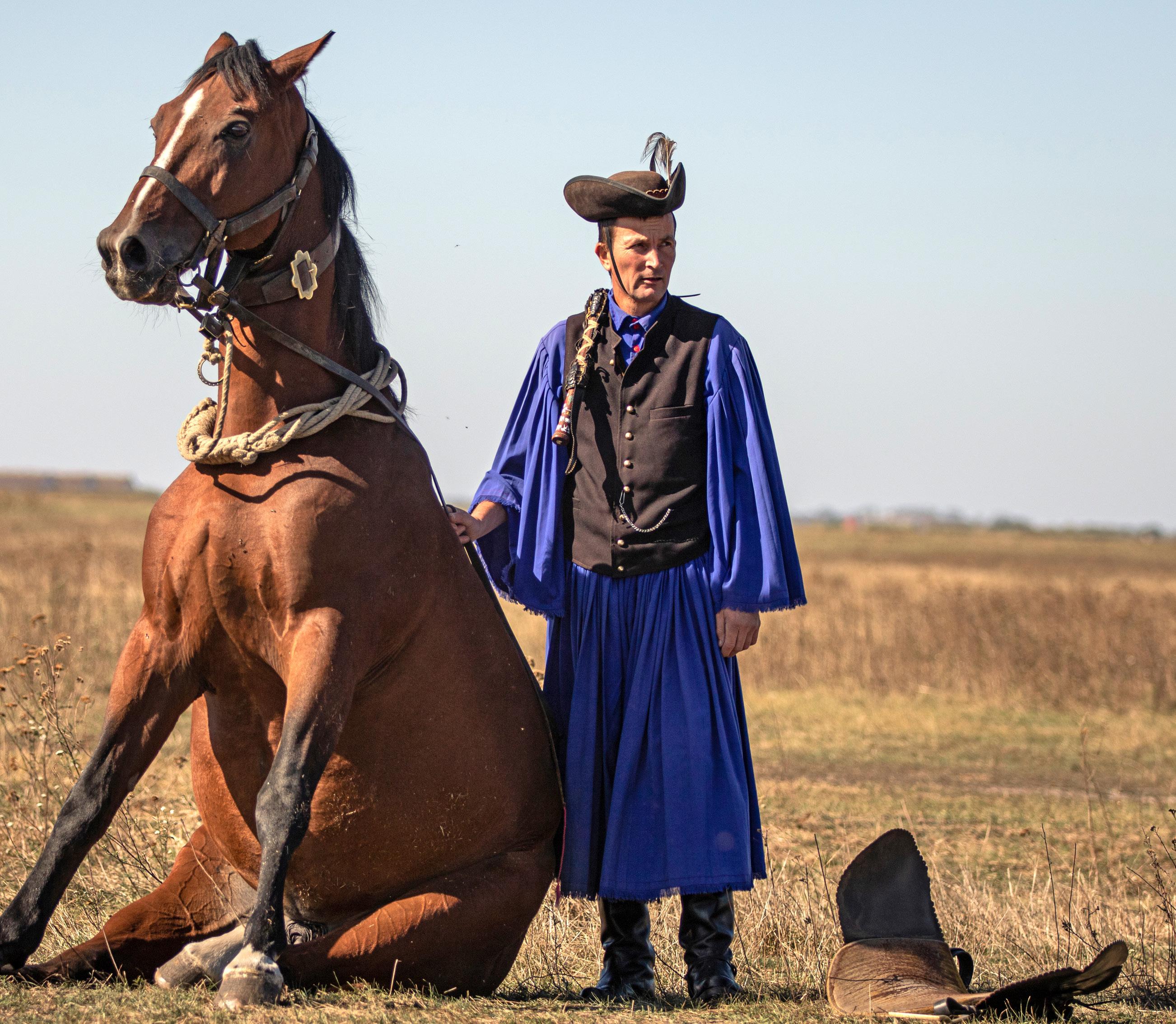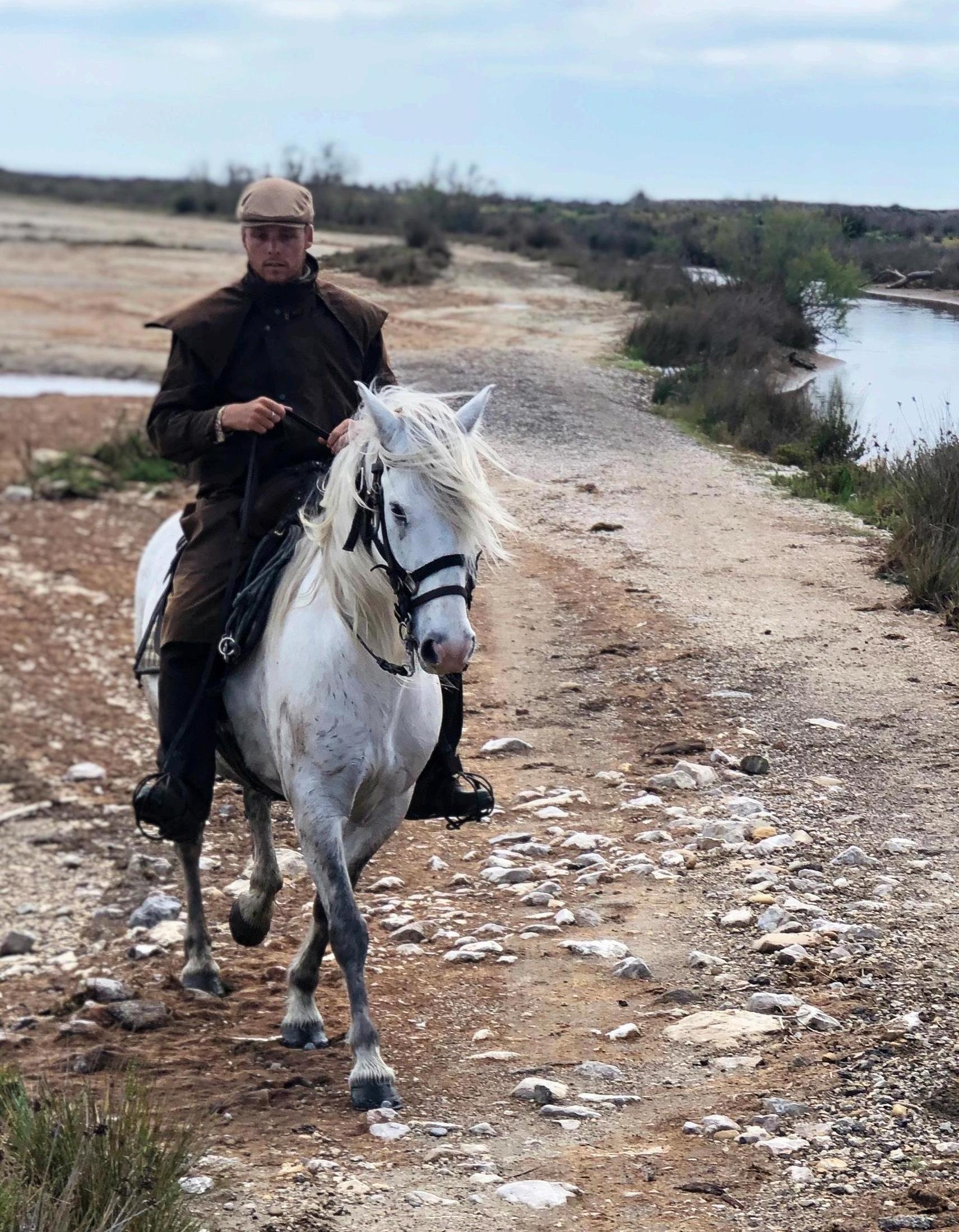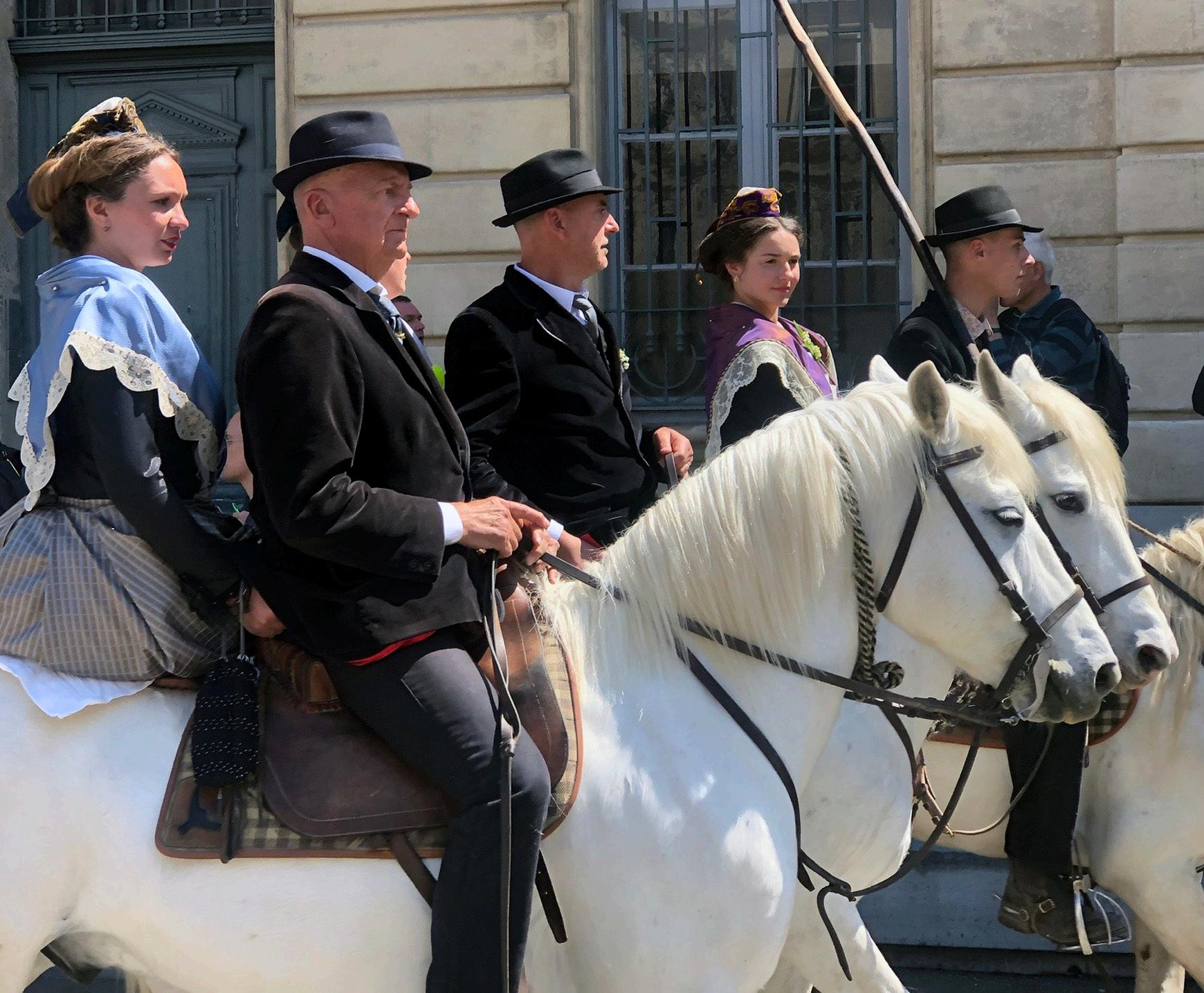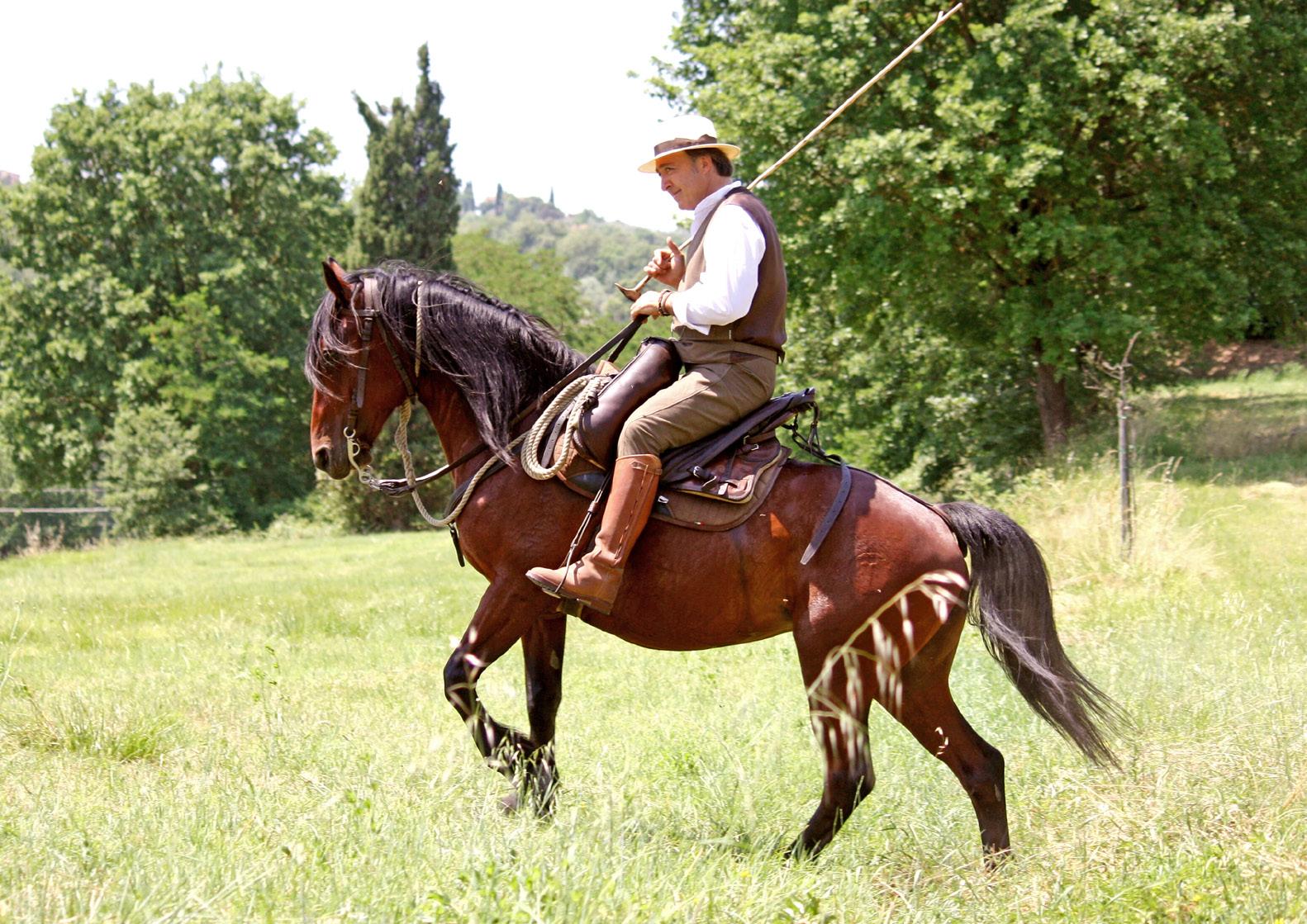
8 minute read
Feature: Europe's Iconic Horseman
FEATURE
Europe’s iconic horsemen
Advertisement
The herdsmen of Europe have a long history steeped in traditions passed down through the centuries. Their story is fascinating, so JESSICA MORTON delved a little deeper.
The hardworking, tough, idiosyncratic characteristics of men and women who tend livestock for a living are universal. And while there are a number of European countries in which the traditional herdsman culture is still practised by local horsemen and women, Italy, France and Hungary deserve a special mention.
The Italian Butteri
The term ‘buttero’ derives from the Latin word ‘butoros’, which translates to ‘ox goad’. While not the most flattering term, butteri (plural of buttero) was nonetheless the name given to the original horsemen and cattle breeders of the Maremma, a region that stretches from the north of Lazio to the former marshlands of southern Tuscany.
The plains of this region were once famous for horse breeding, but after the collapse of ancient Rome the land was abandoned. The river flooded and turned the area into a deadly marshland which attracted malaria-carrying mosquitos, and for hundreds of years life expectancy for the region’s residents was extremely low.
The land did little more than stagnate whilst feudal lords waged war domestically and Ottoman pirates raided the coastline from the Tyrrhenian Sea. The only outsiders willing to pit their wits against this hostile region, characterised by poverty and violence, were those with nothing to lose. Brigands, poachers and ex-mercenaries drifted to the area looking for work and took jobs as farm hands and wranglers, eventually becoming known as the butteri.
These mounted herders took on an important role. On the back of his powerful, locally bred Maremmano horse, the buttero was a heroic character who became symbolic of freedom, strength, and the region in general. He was also the keeper of the age-old secrets of his craft.
The butteri did not live an easy life. In charge of farming operations such as counting and moving stock, they also took care of the cattle and horses, the repair of shelters, fencing, branding, drenching and breaking in the horses.
Their uniform consists of corduroy trousers, a wide-brimmed felt hat, a pastràno (rainproof jacket), goatskin chaps and leather boots. They also carry a mazzarella, a long, thin wooden stick with a hook on one end and a ‘fork’ on the other – a traditional tool used for many tasks such as opening and closing gates, directing cattle and training horses.
In the past, the buttero was the only man who had the right to ride the estate owner's horses – and even today they have an excellent reputation as skilled horsemen and women. Their mount of choice is still the Maremmano. The descendent of ancient Rome’s cavalry horses, they stand between 15 and 16.2hh and like many breeds, have over time undergone some changes mainly brought about by the type of work they were required to perform.
However, thanks to the diligence of the Tuscan and Lazio breeders, the Maremmano have kept their unique identity through the ages, and the important qualities of courage and hardiness have been carefully cultivated. Versatile and reliable, the Maremmano is not only an incredible working horse, but also a sport horse capable of achieving significant results in jumping and dressage events. They are also
used by the Italian mounted police, and in bygone times were cavalry horses. In fact, the last successful cavalry charge (in Russia during the Second World War) was by a regiment mounted mainly on Maremmano horses.
Guardians of the Camargue
The Camargue is a spectacular natural reserve in southern France. Located where two branches of the Rhone River meet the sea, it’s the biggest Mediterranean delta after the Nile. This magical ecosystem is home to the Camargue horse. While the origins of the breed remain relatively unknown – some experts believe they are descendants of the prehistoric Solutré horse – it is generally considered one of the oldest in the world. TOP: Csikós teach their horses to sit, creating a shelter from bad weather (Image by Cecille Zahorka). ABOVE: The sun sets on a Camargue horse in the delta (Image by Cecille Zahorka).


A gardian rides across the Camargue wetlands.
The gardians are the herdsmen of the Camargue. Dating back to the early 16th century, they are a professional order of herdsmen who protect and care for the horses and long-horned bulls that roam the region. Descendants of the ‘gardo besti’, the cattle keepers of the Middle Ages, they follow a code of honour similar to knights of old. Their brotherhood, the Confrérie des Gardians, was founded in 1512 and is the oldest order of its kind in France today.
Gardians wear a distinctive uniform of colorful long sleeved shirts, moleskin trousers, camargue riding boots, velvet jackets and a woolen cape. Like the butteri, they carry a long stick to control the cattle with a fixed trident on one end that, as legend has it, was a gift from the sea god Poseidon. Camargue horses are ridden in traditional tack with caged stirrups to help prevent riders from being dragged should they fall. Life in the Camargue revolves around the bulls which are raised for bloodless
bullfighting. Cattle-breeding plays an essential role in daily life and the bulls often bring colour and interest to local festivals and themed games such as the Camargue races.
Provincial ‘manades’, or ranches, need to produce animals that are as combative as possible, so it’s essential that when bulls are presented in the arena for the first time they have no experience with humans. To do this, the bulls are raised in a semi-wild state, managed as little as possible and almost always from horseback.
The Camargue horse needs to be steadfast and courageous. If the horse is not dependable when working with the bulls, the gardian’s life could be in danger. They are small horses, standing 13.1 to 14.3 hands, but they are intelligent and revered for their steady natures, even when they are facing an angry bull.
The Hungarian Csikós
In the east of Hungary lies the Puszta. Europe's largest grassland, its broad, windswept prairies hold a special place in the imagination of the Hungarian people.
Here you will find the csikós: skillful horsemen that live and work on the Puszta tending the cattle and Nonius horses using farming practices passed down from generation to generation.
Wearing traditional loose trousers, blue linen shirts and black velvet vests, the flamboyant csikós are admired for their horse training skills and the ability to wield impressive leather bullwhips up to four metres long.
The Hungarian Nonius is a medium boned horse which originated when a French stallion stolen from Normandy was bred with Arabian cross Neapolitan mares. This pairing, originally made at the request of the Austro-Hungarian army, turned out better than expected, and resulted in the Nonius, a new breed which became very popular in Hungary and abroad. Over time, two main types of Nonius horse developed: the larger, usually black Mezöhegyes, and the smaller bay Hortobágy typically used by the csikós. Characteristics of the breed include a powerful build, and a heavy but well-proportioned head with a convex profile.
To protect Hortobágy National Park and the vast plains of the Puszta – home to the Hortobágy Stud – the nearly

Gardians during the Festival of the Herdsmen in Arles (Image by Jessica Morton).
Csikós teach their horses not to fear the crack of the bullwhip, just as the betyárs did centuries ago to ensure their horses remained calm when law officials chasing them fired guns. Other tricks csikós emulate include training their horses to lie down and remain still, since that was the only way the betyárs could hide from their pursuers on the flat, grassy plains. Csikós also teach their horses to sit, much like a dog, allowing them to crouch between the forelegs, often the only shelter from storms and wind available to the herdsman on the vast plains of the Puszta.
Going, going, gone?
Although there is EU support for the preservation of equestrian cultures in Europe, this age-old way of life is under threat. Low wages, physically demanding work and the rezoning of communal grazing lands make this a lifestyle fit for only a determined and passionate few.
Europe has one of the highest proportion of critically endangered horse breeds in the world. If these horses and their traditional custodians should disappear, sadly, so will many time honoured land management and animal husbandry practices.
Follow Jessica on Instagram @equestrianwriter.
75,000 hectare area was included in the UNESCO World Heritage List in 1999, and since 2004, the Nonius horse has been considered one of Hungary’s national treasures.

Csikós horsemen are well known for their daring acts of horsemanship, but many of their stunts originate from a less peaceful time when they were used by betyárs, local outlaws, as a means of survival. The betyárs were young farmers turned bandits after they were dispossessed of their farming rights. These men became local heroes and the subject of folklore, in which they were idolised as a symbol of hope, and of the common man standing against tyranny and injustice.










